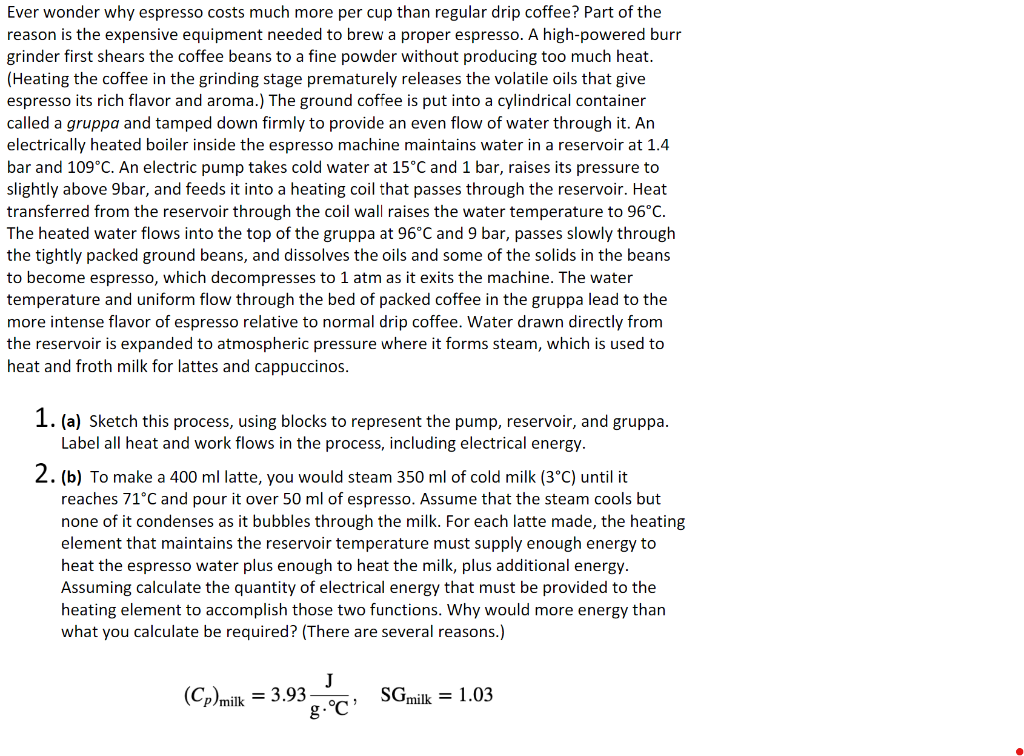
Ever wonder why espresso costs much more per cup than regular drip coffee? Part of the reason is the expensive equipment needed to brew a proper espresso. A high-powered burr grinder first shears the coffee beans to a fine powder without producing too much heat. (Heating the coffee in the grinding stage prematurely releases the volatile oils that give espresso its rich flavor and aroma.) The ground coffee is put into a cylindrical container called a gruppa and tamped down firmly to provide an even flow of water through it. An electrically heated boiler inside the espresso machine maintains water in a reservoir at 1.4 bar and 109C. An electric pump takes cold water at 15C and 1 bar, raises its pressure to slightly above 9bar, and feeds it into a heating coil that passes through the reservoir. Heat transferred from the reservoir through the coil wall raises the water temperature to 96C. The heated water flows into the top of the gruppa at 96C and 9 bar, passes slowly through the tightly packed ground beans, and dissolves the oils and some of the solids in the beans to become espresso, which decompresses to 1atm as it exits the machine. The water temperature and uniform flow through the bed of packed coffee in the gruppa lead to the more intense flavor of espresso relative to normal drip coffee. Water drawn directly from the reservoir is expanded to atmospheric pressure where it forms steam, which is used to heat and froth milk for lattes and cappuccinos. 1. (a) Sketch this process, using blocks to represent the pump, reservoir, and gruppa. Label all heat and work flows in the process, including electrical energy. 2. (b) To make a 400ml latte, you would steam 350ml of cold milk (3C) until it reaches 71C and pour it over 50ml of espresso. Assume that the steam cools but none of it condenses as it bubbles through the milk. For each latte made, the heating element that maintains the reservoir temperature must supply enough energy to heat the espresso water plus enough to heat the milk, plus additional energy. Assuming calculate the quantity of electrical energy that must be provided to the heating element to accomplish those two functions. Why would more energy than what you calculate be required? (There are several reasons.) (Cp)milk=3.93gCJ,SGmilk=1.03







